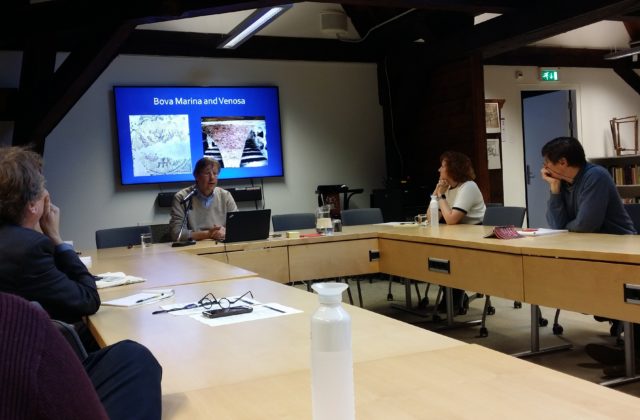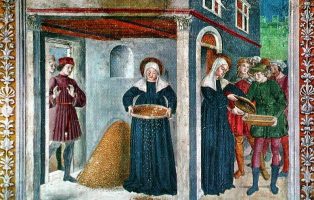On Thursday 5th of October the first NIAS seminar took place. The occasion was a delightful opportunity for NIAS fellows to be introduced to the work of the NIAS-Lorentz Theme Group composed by Leonard Rutgers, Harry Ostrer and Tracy Prowse.
Their research entitled ‘Diaspora, Migration and the Sciences: A New Integrated Perspective’ focusses on finding new ways of studying diaspora and migration, especially the Jewish Diaspora during Roman and early Medieval times through a combination of methodologies from the social sciences, humanities and natural sciences.
The seminar was divided into two segments: a 30-minute presentation and a 30 minute Q&A. During the first half, the research group demonstrated the importance of their interdisciplinary study which can enhance our knowledge of how modern societies relate to their ancestors. The theme-group aims to obtain significant information on how the Diasporic populations moved in Ancient times by applying DNA-analysis and stable isotope data collected from available archaeological sites in the western part of the former Roman Empire. These technologies allow the investigation of an individual or group’s movement in a specific area.
For instance, anthropologist Dr Prowse explained how through stable isotope technology it is possible to learn more about the personal migration history of individuals since stable isotopes such as Oxygen and Strontium can reveal the geographical position of an individual. These isotopes are ‘extracted’ from the teeth or bones found in archaeological places. The value of Oxygen isotopes varies depending on the altitude, humidity and other geographical circumstances of the area, exposing where an individual lived. Strontium isotopes are integrated into the body tissues through the consumption of food, which facilitates the reconstruction of an individual’s diet. By finding out more about where someone has been and what someone ate, it becomes possible to know who was a foreigner in the community and who was not.
During the vivid second half of the presentation many fellows participated in the Q&A with sharp and intriguing questions. During the discussion, the theme-group members emphasised the importance of their study, as their investigation allows to talk about less represented groups in history like women and children. Among the other issues discussed were the political context of their research in today’s society, the selection of the word ‘diaspora’ in the research title, and the methodologies used.
The research group presented a valuable case that seeks to bridge the gap between the Humanities and the Sciences. Rutgers, Ostrer and Prowse’s research brings to light an essential period in migration history but also to that of Europe when the Roman Empire collapsed and various religions emerged. By combining different methodologies, Rutgers, Ostrer and Prowse’s study attempts to define a new research agenda that will enable researchers to examine data in a much more depth than what has been possible hitherto.

Written by Sofía Murell



